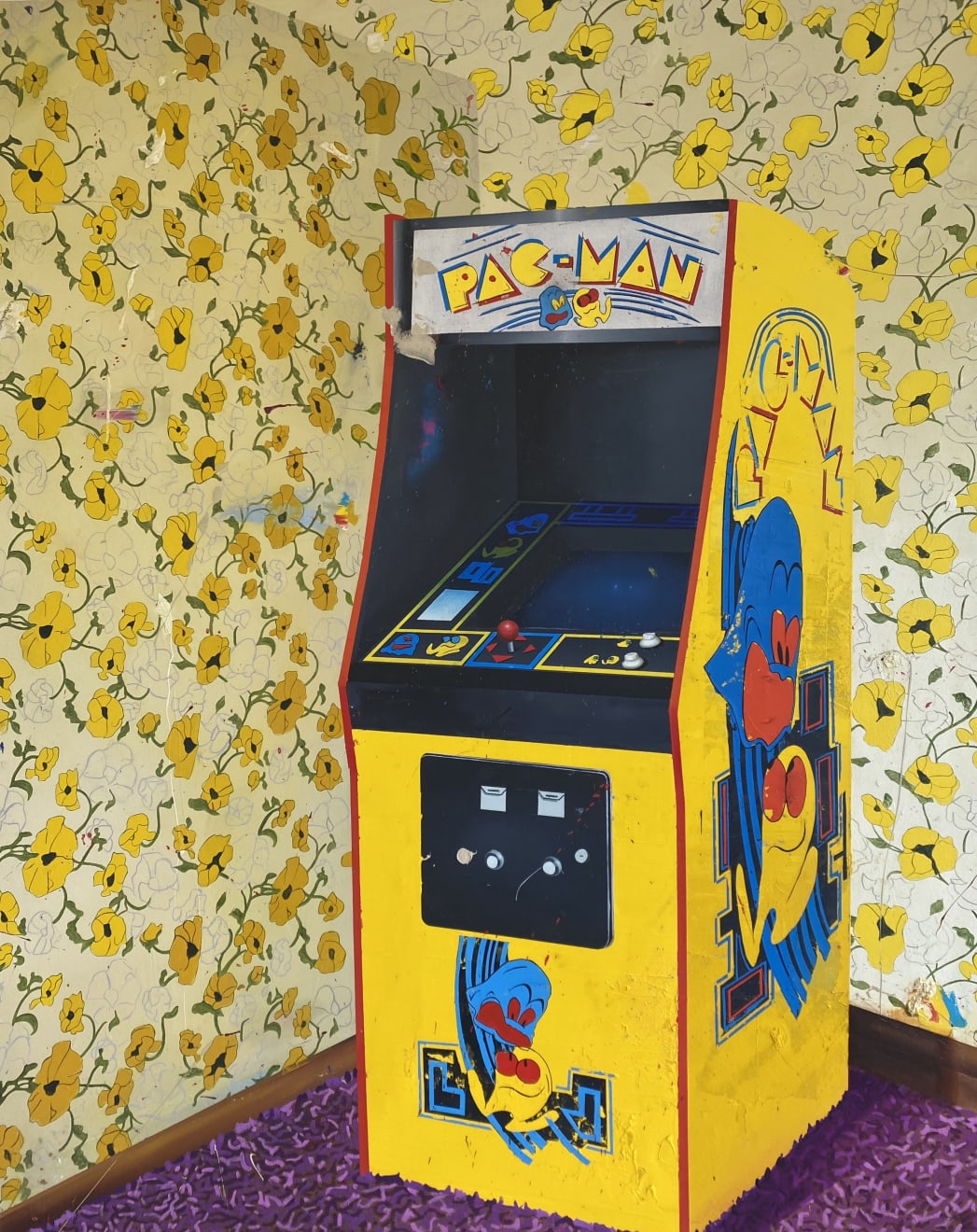Stephen Thorpe
To Die is to go into the Collective Unconscious, 2020
Oil on canvas
151 x 120 cm
Copyright The Artist
Thorpe is heavily influenced by the work of Swiss psychoanalyst Carl Jung, who he had been researching while creating this new series of arcade paintings. While the arcades were first...
Thorpe is heavily influenced by the work of Swiss psychoanalyst Carl Jung, who he had been researching while creating this new series of arcade paintings. While the arcades were first considered self-portraits due to their life-size proportions, Thorpe now regards them as a metaphor for contemporary life in relation to Jung’s idea of the ‘collective unconscious’, the collective experience of a group, that which binds us all together. Alluded to in the title, the collective unconscious is universal, representing all the intangible things that humanity has in common, that come together in full only through death.
In a recent conversation with the artist, Jungian analyst Dr. Alexander Esterhuyzen said: “Part of [Thorpe’s] work is about [his] personal unconscious, but it is definitely also a conduit to the collective unconscious. [He] reminds us of something. The reason why we are drawn to [his] work is because there is something in the collective that [he is] tapping into, and it speaks to us, so we are gripped by it, we’re puzzled, we’re intrigued, we’re interested, we’re moved by it because of the collective element, otherwise we would not have a connection to it.”
In a recent conversation with the artist, Jungian analyst Dr. Alexander Esterhuyzen said: “Part of [Thorpe’s] work is about [his] personal unconscious, but it is definitely also a conduit to the collective unconscious. [He] reminds us of something. The reason why we are drawn to [his] work is because there is something in the collective that [he is] tapping into, and it speaks to us, so we are gripped by it, we’re puzzled, we’re intrigued, we’re interested, we’re moved by it because of the collective element, otherwise we would not have a connection to it.”
